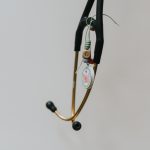Share
Table of contents
Being on CPSA Council: When you have the passion, you make the time
Competence Corner: Introducing the Physician Practice Improvement Program (PPIP)
In medicine, errors can have devastating consequences
Multisystem Inflammatory Syndrome in children and adolescents (MIS-C) is now reportable in Alberta
Make a difference-to patients and to other physicians
Update from TPP Alberta: Prescription syrups containing Codeine
PPE surcharge in community medical clinics
Standards of Practice in practice: Alberta family physician helps with COVID-19 patients in hospital
Multisystem Inflammatory Syndrome in children and adolescents (MIS-C) is now reportable in Alberta
What you need to know
Novel coronavirus (SARS-CoV-2) continues to circulate worldwide. While clinical manifestations of COVID-19 in children are generally milder than those in adults, recent reports from Europe and North America have described clusters of children and adolescents requiring hospital admission due to a multisystem inflammatory condition with some features similar to those of Kawasaki Disease and toxic shock syndrome.
It is essential to understand the impact of this syndrome on the health of children and adolescents in Alberta.
Alberta’s Chief Medical Officer of Health, Dr. Deena Hinshaw, has made Multisystem Inflammatory Syndrome in children and adolescents reportable in Alberta. This means physicians should be aware of the syndrome and, when it is recognized, the case must be reported to the Medical Officer of Health in the Zone of Alberta Health Services in which the physician works within 48 hours.
Please review the Alberta Case Report Form and included preliminary case definition for more information.
Make a difference-to patients and to other physicians
Free virtual information session about becoming a CPSA Councillor
Whether you’ve thought about it before, or this article just piqued your interest, we want you to join us on June 25 for a one-hour virtual town hall-style meeting. Start time is 6:00 p.m. (MT).
Did you know?
100% of surveyed Councillors feel they’ve grown professionally being on CPSA Council and say it’s been a valuable use of their time.
Hosted by Council President Dr. John Bradley, this is your opportunity to learn more about the 2020 Council Election and becoming a CPSA Councillor. Through a short presentation and Q&A session, you’ll learn about:
- the roles and responsibilities of CPSA Councillors;
- who’s eligible to run and who’s not;
- how the nomination process works; and
- key dates surrounding nominations and voting.
Interested? We hope so.
Email Gail.Jones@cpsa.ab.ca to secure your spot. We’ll follow up with access instructions so you can join the session on June 25.
Update from TPP Alberta: Prescription syrups containing Codeine
On May 29, 2020, CPSA Council supported the TPP Alberta Steering Committee’s recommendation to move prescription-status oral liquids containing codeine from Type 2 to Type 1 TPP status.
This change is effective July 1, 2020. As of this date, prescribers must be registered with TPP Alberta and the secure duplicate TPP form must be used when prescribing the applicable drug products listed below.
Key reasons for this change are to improve prescribing oversight and help address public safety concerns associated with non-medical use, misuse and prescription forgeries.
This change will not negatively impact patient care in Alberta.
Drug products affected include:
- Acetaminophen Elixir with 8 mg Codeine Phosphate Syrup
- pms-Acetaminophen with Codeine Elixir
- Calmylin ACE
- Coactifed
- Dimetane C Expectorant
- Dimetapp C
- Robitussin AC
- Teva-Cotridin Expectorant
- TevaCotridin
- Codeine Phosphate Syrup (Laboratoire Atlas Inc.)
- Linctus Codeine Blanc (Laboratoire Atlas Inc.)
Early during the COVID-19 pandemic, Health Canada’s Office of Controlled Drugs and Substances implemented temporary exemptions to the Controlled Drugs and Substances Act, including allowing verbal prescriptions for controlled drugs. While using the secure TPP Alberta form is required for all Type 1 TPP drug products, if this is not possible during the pandemic, Health Canada’s direction may be followed.
For information on registration with TPP Alberta, to order TPP Alberta prescription pads or if you have questions or comments, please visit the TPP Alberta website or contact the program directly by email (TPPinfo@cpsa.ab.ca) or phone (1-800-561-3899, extension 4939).
Verbal prescriptions: practices to help reduce errors
The current pandemic has increased the use of phone and other verbal prescription orders, particularly with the temporary exemptions provided by Health Canada. However, verbal prescriptions are prone to errors.
The Institute for Safe Medication Practices (ISMP) Canada identified the following factors contributing to errors:
- Miscommunication;
- Incorrect transcribing;
- Sound-alike drug or patient names;
- Similar-sounding numbers;
- A practitioner’s use of unfamiliar terminology or acronyms with multiple meanings;
- Background noise and other factors affecting reception clarity;
- Workflow disruptions; and
- Caregivers’ lack of familiarity with individual patients and their needs.
To help prevent errors, it is recommended that prescribers:
- Allow sufficient time to state the order clearly and for the person receiving the order to read it back.
- State their name, license number and contact information.
- Say and then spell out the patient’s name and provide a second identifier (e.g., address, birth date).
- Incorporate all the elements of a complete medication order, including drug name, dosage form, dose and strength (if applicable), route of administration, directions for use, quantity to be dispensed and/or duration of therapy and the number of refills and refill interval (if applicable).
- Communicate drug names by first saying and then spelling them out. Provide both the generic and brand names, especially for recognized look-alike, sound-alike medication pairs. It may be helpful to use a phonetic alphabet to distinguish between sound-alike letters (e.g., “m” as in Mary or “n” as in Nancy).
- Explicitly state the indication for the drug to reduce the risk of misinterpretation.
- Communicate numbers using two different approaches. For example, because the number 15 can easily be misheard as 50, a prescription for “15 mg” should also be communicated as “one-five-milligrams”.
- Fully verbalize all instructions, avoiding any abbreviations. For example, replace “BID” with “twice a day,” and replace “PO” with “by mouth” or “orally.”
- Include the patient’s weight for pediatric patients and for all weight-based medication orders.
Sound communication practices, especially use of the read-back technique, can help mitigate risk.
Discontinued: TPP Alberta multi-prescriber letter alert to physicians
Under TPP Alberta’s multi-prescriber letter intervention, alerts were sent to physicians and nurse practitioners if their patient received monitored medication from multiple prescribers and pharmacies in a three-month period. After deliberation with stakeholder groups (including practicing clinicians), these letters will be discontinued to optimize resources, given the duplication of information with the NP & MD Snapshot-Prescribing reports.
Here are alternate resources for physicians to access multiple-prescriber information:
- MD Snapshot-Prescribing reports in the Physician Portal: Available under the ‘Analytics’ tab of the Physician Portal, MD Snapshot-Prescribing reports include a section on patients who may have received monitored medications from multiple prescribers in the most recent complete quarter.
Physicians are encouraged to review their prescribing report at least once a quarter. Reviewing MD Snapshot-Prescribing qualifies you for continuing medical education credits as a non-certified, self-learning activity. For more details, visit www.cfpc.ca or www.royalcollege.ca.
- Alberta Netcare’s Pharmaceutical Information Network (PIN): Netcare’s PIN is an alternate source of current dispense information for your patients.
- TPP Alberta Patient profiles: Physicians may request patient dispense profiles from TPP AB for any specified time period of interest.
Questions or comments? Contact us at TPPInfo@cpsa.ab.ca.
Personal protective equipment (PPE) surcharge in community medical clinics
Starting July 1, businesses and non-AHS organizations will be required to access PPE directly through suppliers, to better allow for the government to focus on the supply of critical PPE for organizations at the highest risk of exposure to COVID-19. In cases where a community clinic’s PPE procurement is paid for out-of-pocket and not covered by a PCN or other organization, it is important to be aware of the appropriate means by which a physician may recoup costs for personal protective equipment and other medical products in community care settings.
Physicians may charge patients a reasonable surcharge to recover costs for their practice that are not otherwise covered by provincial health care. However, to appropriately do so, discussion with the patient must occur in advance to ensure costs to the patient for medical products are fair and proportionate to the cost of what the physician paid for product procurement. Professional consideration of others factors, such as a patient’s income and ability to pay a surcharge, is also expected.
Necessary or non-elective care should not be refused on the basis that the patient cannot, or will not, pay a PPE surcharge.
For additional guidance, physicians should refer to CPSA’s Standard of Practice on Sale of Products by Physicians and the AMA’s Uninsured Services Guidelines to Billing.
Questions? Please contact CPSA Standards of Practice Coordinator, Chantelle Dick, at Chantelle.Dick@cpsa.ab.ca.
Related Standards
Standards of Practice in practice: Alberta family physician helps with COVID-19 patients in hospital
A Calgary family physician volunteered this spring to help on the front lines with COVID-19 patients in a Calgary hospital. He turned over the care of his patients to other physicians who accepted them in the interim period, while he notified his patients of the transfer of care.
One of his patients, who only wanted this physician to treat them, filed a complaint to CPSA. However, the complainant admitted the replacement physician saw her on a timely basis and provided her proper medical care.
Upon review, CPSA’s Complaints Director, Dr. Michael Caffaro, dismissed the complaint, as the physician complied with the requirements of CPSA’s Standard of Practice on Transfer of Care.
Have questions about CPSA’s Standards of Practice? Please contact CPSA Standards of Practice Coordinator, Chantelle Dick, at Chantelle.Dick@cpsa.ab.ca.
Just over two weeks left for postgraduate renewal
Deadline is June 30
Thanks to all our postgrads who already completed their 2020 Renewal Information Form (RIF). For those
who still need to renew, make sure you log in to the physician portal before June 30. Completing the annual RIF ensures we have your updated contact information, and important information surrounding your health and professionalism.
Questions? Email annual.billing@cpsa.ab.ca
Professional Conduct report
Dr. David Odugbemi’s practice permit suspended for violating agreement with CPSA
CPSA suspended the practice permit of Dr. David Odugbemi, a family physician from Edmonton/Stony Plain, for continuing to see patients after signing an agreement with CPSA to withdraw from practice.
Background
In 2019, Dr. Odugbemi underwent a multi-disciplinary practice assessment and based on its results, he signed an agreement with CPSA’s Physician Health Monitoring Program, agreeing to withdraw from practice as of Oct. 1, 2019. After receiving information from the public that Dr. Odugbemi was still practising, CPSA’s Professional Conduct department confirmed he was seeing patients and his practice permit was suspended under section 65 of the Health Professions Act.
Dr. Odugbemi was previously found guilty of unprofessional conduct by a CPSA hearing tribunal, for failing to abide by the conditions of a Terms of Resolution Agreement he signed with CPSA. The hearing tribunal ordered the cancellation of his practice permit, which was put on hold when Dr. Odugbemi appealed the tribunal’s decision. At his appeal hearing, Dr. Odugbemi’s request to present new evidence in his defense to the hearing tribunal was granted. That hearing is scheduled to take place on Sept. 24-25, 2020.
Commentary
Dr. Odugbemi’s repeated acts of non-compliance with agreements he willingly entered into with CPSA harms the integrity of the medical profession and the trust placed in us by Albertans, who look to CPSA to ensure physicians provide a certain standard of care. Suspending a physician’s practice permit under section 65 is a last resort, used only when we feel removing a physician from practice is in the best interest of public safety. CPSA is taking steps to determine how many patients received care from Dr. Odugbemi while he was supposed to be withdrawn from practice and to advise them to access follow-up care with another suitable provider.
Related News
All News & EventsJune 11, 2020
Competence Corner: Introducing the Physician Practice Improvement Program (PPIP)
June 11, 2020
Being on CPSA Council: When you have the passion, you make the time
June 11, 2020




















Comments for this post are now closed. If you would like to share your feedback on this topic, please email support@cpsa.ca.